So I thought I would share some of my favorite adventure stories that I have read over the years. I did not want to focus on the obvious ones like Jon Krakauer’s “Into Thin Air,” “Into the Wild,” or John Muir’s “My First Summer in the Sierra.” Instead, I wanted to give you books that you may have overlooked.
Tag: Adventure (Page 1 of 2)
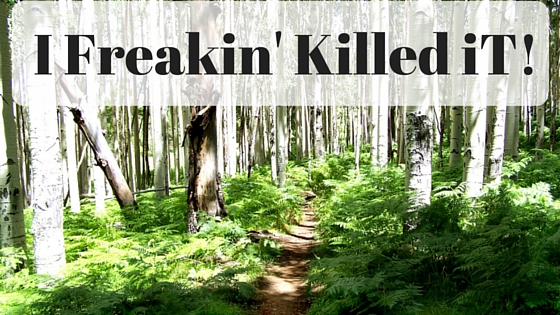
Fastest Known Times or FKT’s have recently surged into popular culture after this past summer when Scott Jurek and Heather “Anish” Anderson both set separate records on the Appalachian Trail. FKT attempts and records are set all the time and most people never hear about it unless you are actively following them, but because of Jurek’s celebrity from “Born to Run” and the epic distance of the Appalachian Trail it drew in more people than usual.
For years, runners have been actively pursuing FKT’s on famous routes like the Grand Canyon’s Rim-2-Rim-2-Rim or Colorado’s Nolan’s 14. Their unofficial record keeper, Peter Bakwin, of the Fastest Known Times ProBoards, started maintaining all these records around 1999 after he and a friend set the FKT for the Colorado and John Muir Trail. Now it has grown into a full Internet community where people can see what is being run around them and if maybe they can set the new fastest record.
For those ultra runners who aren’t drawn to the “fortune and glory” of actual races (we all know of the untold fortunes the top ultra runners make) it’s a way to prove yourself in a new way. Some may see it as being a purer form of ultra running. It is a way to compete in a realm without aid stations, race organizers, and to face down the trail within your own mental arena.
Some of the benefits I see to FKT’s are you have more control over when you challenge the course. With races, you have to accept the conditions on the course and how you feel or wait till next year. For an FKT you can say, ‘I don’t feel it today, maybe next weekend or next week’ (Of course this is if you did not have to travel to the course). You can also attempt it more than once in a year and determine which conditions you found more favorable.
Lastly, I think FKT’s are a great thing because not many sports are set up for such a DIY element and it gets back to that root of racing, “I bet I can do it faster”.
Have you pursued an FKT? Are you thinking about pursuing an FKT? Please share your thoughts and comments, thank you
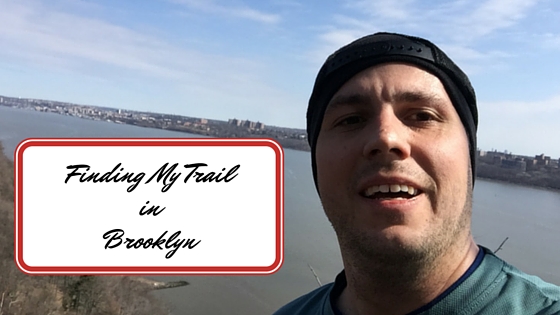
As an avid trail runner, I decided to take on the challenge of finding trails to explore in Brooklyn. So I, of course, looked to Google to help me find suggested runs. The first thing I came across was the website for The Brooklyn Trail Runners, who happened to have a group run my first day in town. So here is a wrap-up of all my locally sourced, artisanal miles.
Sunday: The Brooklyn Trail Runners “bRUNch” (Strava Data)
This technically is not a run in Brooklyn, or even New York City, as we ran across the George Washington Bridge (GWB) to Fort Lee, New Jersey (Gov. Chris Christie was out of town so the bridge was open). After meeting at a restaurant in Manhattan we dropped off our stuff, made quick introductions and began our run crossing the GWB and connecting to the Long Path.
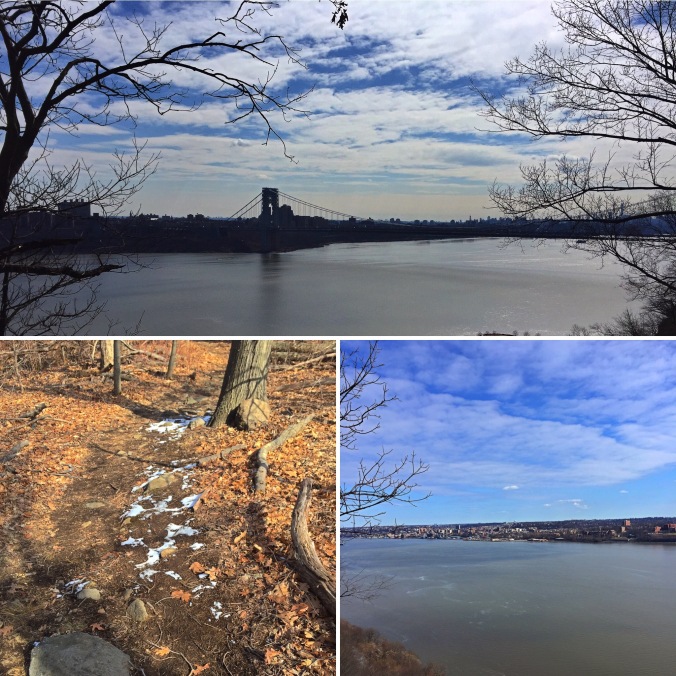
The Long Path starts at the GWB and goes 357-miles to Albany, New York. The trail starts out wide and easy but as we ran up the river the track became more technical. My biggest complaint about the trail is how close it stays to the Palisades Parkway. It does have some great vistas as it winds closer to the cliffs. We cruised out about an hour and then returned to the restaurant for some well-deserved food and beers.
One of the best aspects of finding a running group/club to run with for a day is you get a little insider knowledge about the place you are visiting. On top of that, you get to meet new and interesting people. I was not the only tourist in the group as a businessman from South Africa also joined us. It was nice to be able to talk to trail runners whose experiences have been wholly different from my own.
Monday: Prospect Park (Strava Data)
It was a straight shot of about a mile and a half to get to Prospect Park from my hotel. I burned up Flatbush Ave attempting to get away from the busy street as fast as possible. Running on the streets of NYC is more than just a physical workout, but also a mental workout. Constantly I found myself judging rates of speed, calculating if I could make the crosswalk in time and figuring out my path through the sea of other pedestrians. Once I got there, I was rewarded with a bit of a trail run.

The trail was not much compared to what I am used to but it was there. In this park where paved paths guide you around, people have been compelled to create their own paths. This says a lot about how people still desire that connection with the earth, the feeling of dirt under their feet. It all reaffirms that need for green spaces and what the mental health repercussions would be without them.
Conclusion:
I did not make it out for a third run, as I had hoped. I guess we can blame it on the many fine dining and drinking establishments of Brooklyn. The thing I took away from this trip is my continued love of exploring someplace new through running. Even when I was not running, I was walking and experiencing how people interacted with the city. It left me with a better understanding of how the city worked and how to navigate around. So next time you are somewhere new, I would suggest even in a city, unplug and wear down some of that shoe leather.
What have your experiences been exploring somewhere new? Have you tagged along with a local running club?
This past Sunday my wife and I dedicated the day to fun and adventure. After eating breakfast, we loaded our kayaks into the truck and drove to the Eno River Boat Ramp in Durham, North Carolina. It was a beautiful morning with a light chill in the air so the boat ramp was busy with fishermen putting their boats into the river.
We unloaded our kayaks and slipped into the river. At first, I found the scenery a bit dull as we have had a lot of rain this winter, which caused the river to spill across the floodplain and washed the surrounding vegetation in mud. As we paddled past the fishermen in their boats we found ourselves drifting into more solitude. We began picking out unique looking trees and 100-year-old oak trees as we toured a small section of the river.
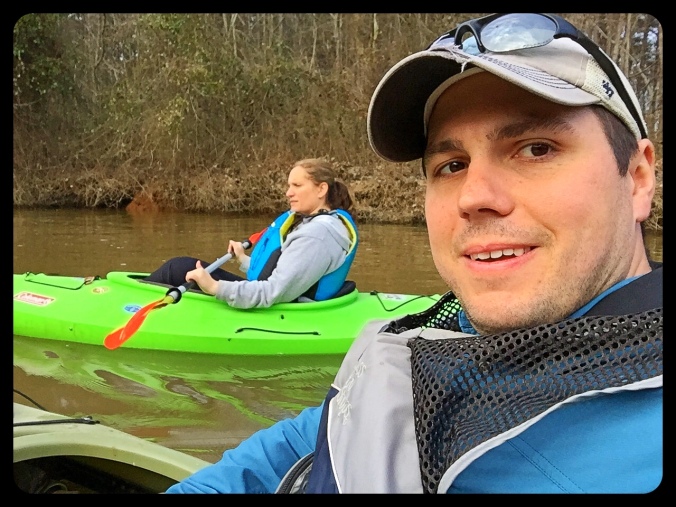
Following our 6-mile round trip paddle, we drove to the town of Hillsborough for some beers and barbecue. We saddled up to the bar at Mystery Brewing Public House to begin sampling their tasty gluten sodas and ordered lunch from Hillsborough BBQ Company. This is one of the best combinations in the Triangle and I recommend if anyone happens to be out around Hillsborough to check both out.
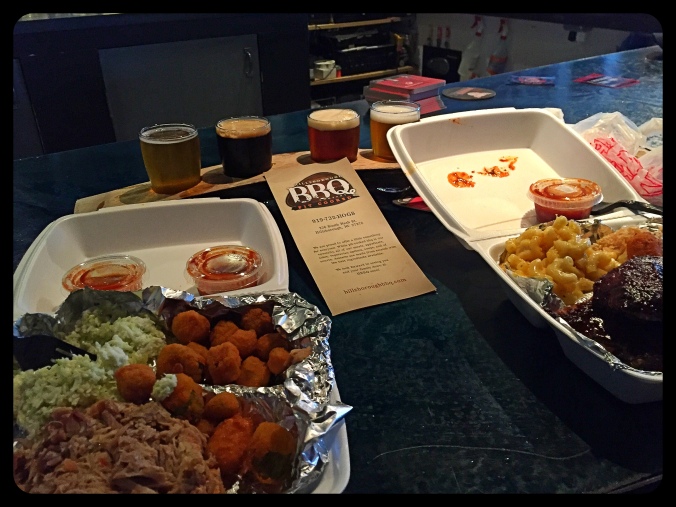
After stuffing ourselves with barbecue, we headed out to Occoneechee Mountain Natural Area for a hike. We pulled into the small, overflowing parking lot only to be greeted by raindrops. While another couple turned back from the trailhead we figured we would march on and hope the rain would quickly pass. Fortunately, the rain only lasted for 10-15 minutes, just doing enough to make the air humid. It was a nice loop that went down along the Eno River then climbed up an old rock quarry to give us a great view of Hillsborough.
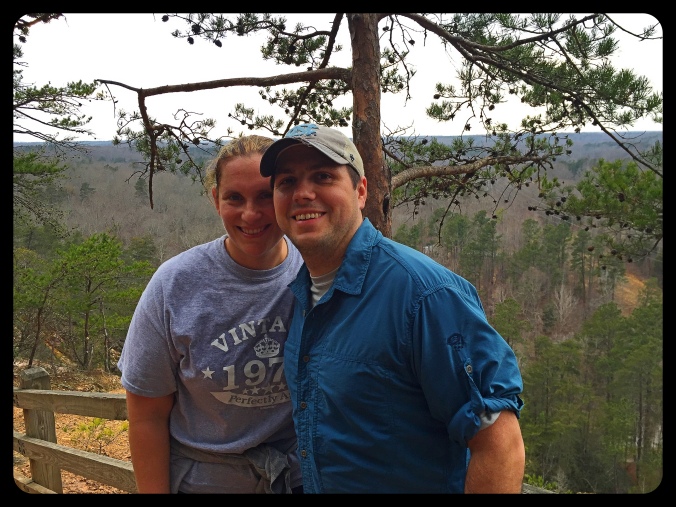
After the hike, we finished the day with a stop at YesterYears Brewery in Carrboro. Then we headed home to unload the truck and feed the dogs.

The thing is while our adventure was nothing groundbreaking it was a nice day outside. It was a day where my significant other and I got to connect and spend the day seeing new places. An adventure does not have to be a speed ascent of Denali or paddling a source to sea on the Amazon. It is important to make these small adventures part of our busy lives. If you are outside, experiencing things for the first time or in a new way then you are having an adventure. What is better than making new stories with friends or loved ones? Not much in the grand scheme of this singular life.

The air begins to cool as the sun begins to go down and you are not exactly sure about where you are. Maybe the mental note of ‘turn left at the downed tree with the squirrel on it’ was not your best moment. Now you are starting to even question whether it was a grey, red or one of those mutant black squirrels (seriously look it up). Now you shiver and you regret leaving that hoodie in the car. It is right about here you first ask yourself the question, “Am I lost?”
You probably are not, you just need to take a moment to calm down and figure out where you are. This is the time to sit down and take a moment and think rationally about it. This will help prevent you from doing something to get yourself into real trouble.
According to Boy’s Life Magazine (the Foo Fighter’s least favorite magazine), you should follow the acronym S.T.O.P.
- Stop: Just stop moving, getting more lost will not make it easier to get found.
- Think: Take a moment to think back on how you got to this point and look at the map if you have one.
- Observe: Look around and assess if anything is familiar. Maybe you can see the parking lot from there.
- Plan: Come up with a plan. If you want to look over the next hill to see if you find something you recognize, make easily distinguishable markers to at least get you back to where you are now. Do not keep wandering around hoping to find your way out.
So now that you have admitted that you are lost it is time to figure out your next steps. You are at a critical point where you must decide what you do next. Does someone expect you back? Will they notify help if you do not return tonight? Do you have the resources to spend the night? Approximately how much daylight do you have left? Do you have food and water?
If you know someone is expecting you back at a certain time and you know they will notify the authorities, then you need to hunker down. You need to face the possibility of being out there the entire night. That means get out of the wind, build a shelter that helps keep body heat in, and conserve what remaining resources you have.
Do not drink unfiltered water unless it is a life or death situation.
Do not camouflage yourself and your equipment (unless you are being hunted by a predator).
Attempt to remain in your current location through the night and as long as possible into the next day. If you have to move or choose to move make sure to mark the route with obvious signs that rescuers can follow. Arrange rocks into arrows, break fresh tree branches or arrange things in a way that will tell people that someone recently passed through the area.
Ultimately the best thing to do is wait for help, moving around only makes it harder for rescuers to find you.
And as always, remember the words of Douglas Adams, “Don’t panic!”
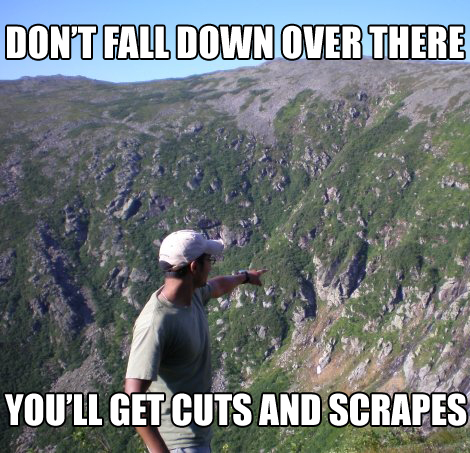
As of lately I have been working on building and improving my Instagram presence. A big piece of this is being more active and taking the time to photograph my runs and hikes. Taking pictures expressly for social media is nothing new for me, but now it definitely feels less like I am recording an event and more like I am competing for “Likes”.
So I decided to make a list of Pros and Cons and see if I may find some revelation on the good or evil of Instagram.
Look how much fun my friend Terry is having with my Instagram habit
Pros:
- My desire to find interesting photographs or a unique way to frame the sunrise has made me much more aware of my surroundings. I have been running the same trails for years now but I’m starting to appreciate different features, textures and patterns that I have previously run past over and over.
- I am always looking for somewhere new to go. This is not something new for me, but now I am focusing on the photos I will take.
- Hopefully, my pictures are inspiring people to get out and explore the world around them. Whether it is planning an epic trip to a national park or just walking around the forest behind their house.
Cons:
- I’m not as present with my running partners in conversation. As my mind begins to focus on finding a great shot, I lose touch with the conversation.
- The trip becomes more about the photo documentation than the experience. I am not saying that I lose everything about the experience but taking an epic picture is beginning to dominate the experience.
- My trips are losing spontaneity as I become more focused on getting to the perfect photo opportunity. While this is not the worst thing it is curbing my chance at self-discovery.
So is Instagram good or bad. It’s neither, like a finely crafted beer, it is something that should be enjoyed with moderation. Some days I probably obsess over it too much, while others I hardly notice it. Going forward, I should endeavour to be more present in the moment while also appreciating the beauty around me.
For some more fun information on Instagram, check out this video “Instagram Husbands”
I’ve also recently wrote about putting mileage into context on my running blog “The Distance and the Pain”, so check that out.

Storytelling is a key skill to have when you are sharing an adventure with someone. The thing is recounting what happened, is not just about regurgitating a dry account of what happened. You can have the coolest story ever, but without excitement, you might as well be reading tax laws to your audience.
A while back I used to tell this complete B.S. story about the time I engaged in hand-to-hand combat with a Grizzly Bear (yeah bears are running theme for me). As I retold the story I dialed it in and learned a few lessons about how to deliver a solid story.
How to Begin:
Begin with the meat of your story or the hook as some call it. This is what draws people into the story. Introduce the story with something like, “Did I ever tell you about the time a German WWII veteran bought me a beer for being American?” (A true story) It draws people in, as they want to know the details surrounding this event. This clears the way for you to launch into the beginning.
Laying Out the Story:
Now that you have the hook in, you can launch into the event preceding the main point of the story. Map out your story with the key details that put it together. Visualize it as a straight line and avoid sharing too many details that make it look more like a curvy road.
Keep the Story Fluid:
This is where Emotional Intelligence plays a big role as you watch your audience. What details do they want, what is too much, and what details is my audience most receptive to? When I would tell my bear story there was a mildly off-color joke that I could play up, tame down or completely remove depending on the audience. It was of little consequence to the story, but provide a chuckle just before the main action. With any story it is important for the teller read the audience as to when they want more or less. Some people just want to sit back and enjoy a fantastic yarn, while others what a quicker and to the point explanation.
Animate the Story:
People feed off enthusiasm, so if you want people to draw in you have to show that you are excited about the story you are sharing. It is easy to be excited and talk rapidly like you cannot wait to get it all out, but that does not connect with your audience. Tell the story in a natural rhythm, but use the space you have to include movement in your retelling. If you partially re-enact key details of the story it brings further understanding as to the action while, also drawing the listener in. You in an essence are bringing the story to life.
End With a Punch:
The biggest problem is to know when to end your story. Sure you can close the climax of action and ramble on about the after effects, but that leaves your story to close on the soft note. Instead, close on a punch line or a moral. Then allow your audience to ask for supplemental details if they are interested.
So go out there and earn some stories through your adventures then remember these skills when you and your friends are sitting around a bar or campfire.
Here are a few extra resources:
Storytelling Skills and Techniques
One Final Note:
There is no problem with telling a B.S. story, as long as you don’t attempt to pass it off as the truth. Your audience will see through you and just think you are a liar.


Merriam-Webster defines adventure as, “an exciting or dangerous experience”. So it’s not ridiculous to say that most adventures push your limits. That’s the point of an adventure, to get out of your comfort zone and say, “I can do this!” That said, there is also knowing where your limits are and the responsibility to not needlessly take risks. The reason is that when you call for help, you are asking someone else to put his or her life on the line for you. In mountaineering, there is something called the “death zone”, a place where if something bad happens to you, it is a death sentence.
This isn’t to say you should not push your limits. The above picture shows Sue Austin, a woman who has been challenging ideas about what it means to be handicapped. Sue has looked at the world around her and said how can I show that I’m not a prisoner of a wheelchair. The wheelchair is just her vehicle to see the world.
She worked with engineers and experienced divers to devise a system in which she could use her wheelchair on a deep-sea dive. She then went where many people in her position would never think of going. What Sue did was push her limits while working to mitigate risk.
I am not trying to discourage the budding adventurist because I have taken my share of dumb, needless risks. I just want to encourage people to plan, prepare and analyze their proposed adventure. We live in a world where safety equipment and features are built into most aspects of our lives so it is easy to lose sight on what real risk is.
One of the deadliest years on Mount Everest since 1996 occurred in 2014. A problem that kept re-occurring on Everest was the amount of novice climbers who booked trips with discount outfitters. The novice climbers saw this as a guided trip to the summit of the highest mountain on Earth. They in no way were prepared for the physical stamina required to make the climb or what to do when things went wrong. The outfitters were prioritizing getting their clients to the summit over doing it safely. Fortunately the government of Nepal has stepped in and placed more controls on who gets to attempt Everest.
I leave you with this, go out and explore and experience. Just do it wisely, not foolishly.
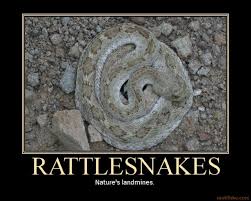
You are scrambling over some rocks while out on your adventure when you jump down only to be met with a sudden stinging pain and a chorus of tiny maracas. You have been bitten, but unfortunately for your girlfriend you won’t become a sparkly, moping vampire, you will begin to develop necrosis (the death of skin and muscle tissue cells around the bite area).
So what are you to do now that you’ve been bitten? First move away from the snake. The snake bit you because he felt threatened, not because he thought you would taste delicious.
After moving away, remember this next step through the rest of our snake encounter. In the words of the great Douglas Adams, “Don’t panic!”
A lot of old timers will tell you that you need to kill or capture the snake to bring with you to the Emergency Room. This is as bad as drunkenly texting your ex at 3am. The thing is they estimate that 20-25% of pit viper (rattlesnakes, copperheads) and 50% of coral snake bites are dry bites (the snake does not use venom). So chasing a snake around is sure to increase the likelihood that it will use venom. Just note the description of the snake and stay away. In North America there is only one type antivenom that treats bites from rattlesnakes, copperheads and cotton-mouth/water moccasins. The only outlying snake would be the coral snake.
Do not attempt to “suck” the venom out of the bite. While this makes for an entertaining comedy trope, it is not accepted first aid.
Some more old practices that we now know to be bad are:
- Do not put ice on the bite.
- Do not try to “bleed” out the poison by cutting between the fang marks.
- Do not use alcohol.
- DO NOT TOURNIQUET THE AFFECTED LIMB!
What you should do is remove anything that can become constrictive in the event of swelling (things like rings).
Attempt to immobilize the bitten area without constricting the flow of blood. Seek immediate medical attention from the local Emergency Room.
Remember throughout the event the key is to remain calm and don’t panic.
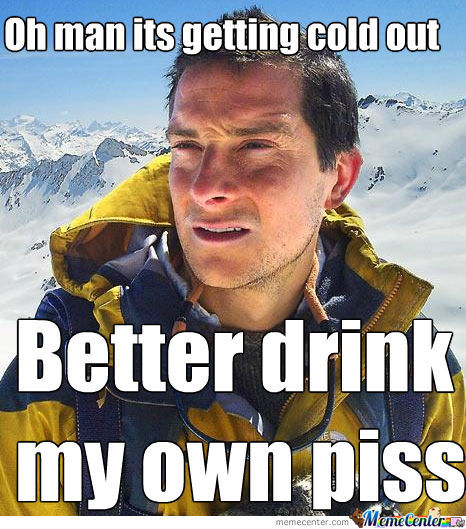
If you intentionally own two or more pairs of Running Shoes, then you probably know who Caballo Blanco is. Caballo Blanco is the nickname of ultra running legend Micah True whom went on to become the mystical central figure of Christopher McDougall’s book “Born to Run”.
Micah True lived a life without materialism and in pursuit of passion. With the decision to eschew a normative American life he developed a bit of a following not unlike that of Christopher McCandless. For a man who lived a fairly private life this lead to complications but also the ability to use his celebrity to further causes he cared about, like protecting Copper Canyon in Mexico. Unfortunately, just as he spend a large portion of his time running alone through the mountains his life would end the same way.
On May 27, 2012 True left the Wilderness Lodge in the Gila Wilderness, part of the Gila National Forest in New Mexico, for a 12-mile run. After he failed to return to the lodge a large search and rescue operation was launched in an attempt to locate him. On March 31st, after searching a 200,000-acre area, they finally found his body alongside a stream. True had died from complications related to a heart disorder.
Could True have been saved? That is something we will never know, but what we can learn from it is the importance of notifying people as to where you are.
When I was younger I used to go solo hiking all the time, and I would often write up my where I was and my proposed route and when to contact help if I had not returned. I would then tape it to my roommate’s door and begin my adventure. Fortunately I never needed assistance but at least rescuers would not waste valuable time searching other areas.
Aron Ralston famously gave a vague description of his weekend itinerary in Utah and found his arm pinned under a boulder in a canyon. While searchers looked elsewhere, Ralston was forced to cut his own arm off to escape the predicament.
Today it is even easier to let people know you need help. There is a great app called Bugle. This app allows you to put in your important information, such as where you are going and when you plan to return. If you do not check in with the app in time it will automatically send alert notifications to your emergency contacts telling them they should check in with you and where you said you would be. The app is free so there are no excuses for an adventurer to not use it.
So unless you enjoy drinking your own urine or you’ve always wanted to attempt a major surgery on yourself, tell someone where you are going.
Recent Comments